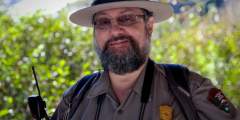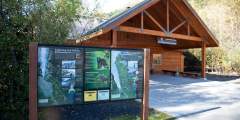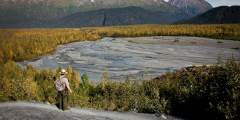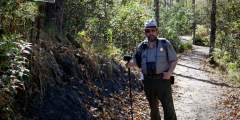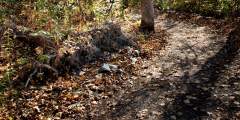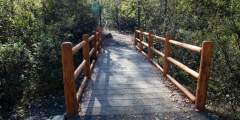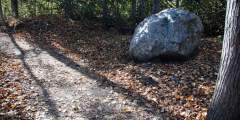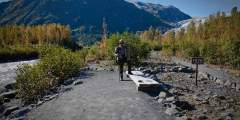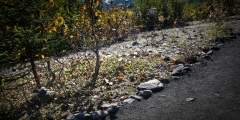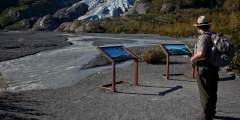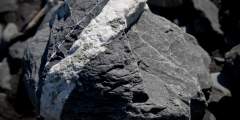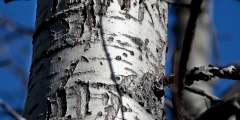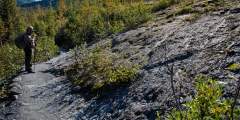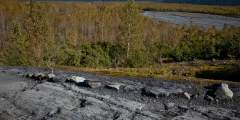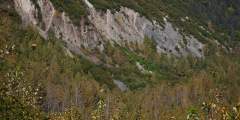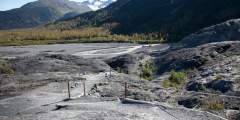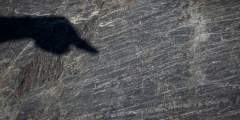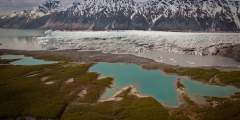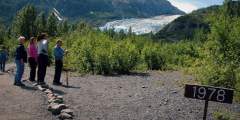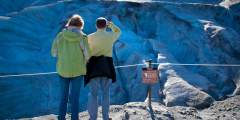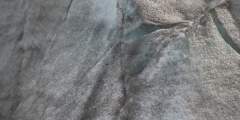Exit Glacier Audio Guide
Take a personal tour of the Exit Glacier area with former Chief Interpretive Park Ranger for this area, Doug Capra. Doug takes you through the only place in Kenai Fjords National Park where you can see the glacial ice and its dynamics up close on foot. He highlights key points of interest on the trails that pass through the forest, near the outwash plain, and at overlooks above the glacier. You’ll learn things about glacial landscapes, plant succession, and the area’s animals. Kenai Fjords became a national park to protect its glaciers and fjords—see both through the eyes of this park expert!
Show Map
Points of Interest
Doug Capra first came to Alaska in 1971 as a teacher — his first job was out in the Aleutian Islands. Now living on the Kenai Peninsula, he continues to teach you all about a place he loves.
Start your tour of this mammoth glacier here. You won’t find restrooms or water on the trail, so stop in here before heading out. Be ready to see wildlife along the trail, like bears and moose. And remember, if you see a bear, don’t surprise it, just let it go on its way.
Sounds are an essential part of this area’s beautiful landscape. So be sure to turn off your audio devices to hear the sounds of the river or animals in the forest. Listening’s also important in remaining alert in the event of danger.
As you drive along the road, you’ll notice signs marked with a year. These indicate where the glacier was at various points in time. Learn how scientists accurately figure these points out.
There’s a lot going on underneath your feet! Your mom probably makes your meals at home, but in the forest it’s different. Find out how Cottonwood and Alder Trees produce nutrients for nearby plants.
Lots of moose make their home here; look over the sides of the bridge for their scat. These moose feed off the Felt-Leaf Willow trees, but how do they reach the leaves on the high branches?
Do you like taking the moving sidewalks at the airport? Well, the big boulder off to the right didn’t get there by walking. Hear how the glacier can be used as geological transportation.
Why is this water so murky? Apparently glaciers aren’t one big block of ice.
The plants in this area are working together to repair their environment. Look off to your left and you’ll see a mat of a plant known as yellow dryas. The ground here is bare, but the presence of this plant is a sign that new soil is being built up.
There’s a lot going on all around you – there has been for a while. Understand the role of mountains, snow, and ice in the formation of glaciers throughout the seasons.
Take a moment to look at the geology of the glacier: this area is made up of a blend of metamorphic, sedimentary, and igneous rocks. How did all three of these types of rock get here?
It’s a good reminder that this is bear country. Hear the story of how these claw marks got on the tree.
These vertical rocks were originally in horizontal layers. What twisted them 90 degrees?
If you stick your tongue to a frozen pole in the winter, wouldn’t it get stuck? Something similar happened here.
Fjords are another glacial creation. Learn how they are made and what their characteristics make them different from a simple valley.
Check out Doug’s photos of the glacier from just a few years ago. You may notice that it has moved a few feet.
Do you know what direction the glacier was moving at specific times in history? Scientist find that out by taking a close look at the rocks around you.
As you were driving, you most likely noticed signs with years posted along the road. These display indications of the Little Ice Age. Was Exit Glacier advancing or retreating during this short period of time?
This glacier is too big for drops of food coloring. So where does it’s color come from?
You won’t always be able to make it to the toe of the glacier, but it’s a cool experience when you can. Check out today’s glacier and compare it with photos from the past at the Nature Center.

